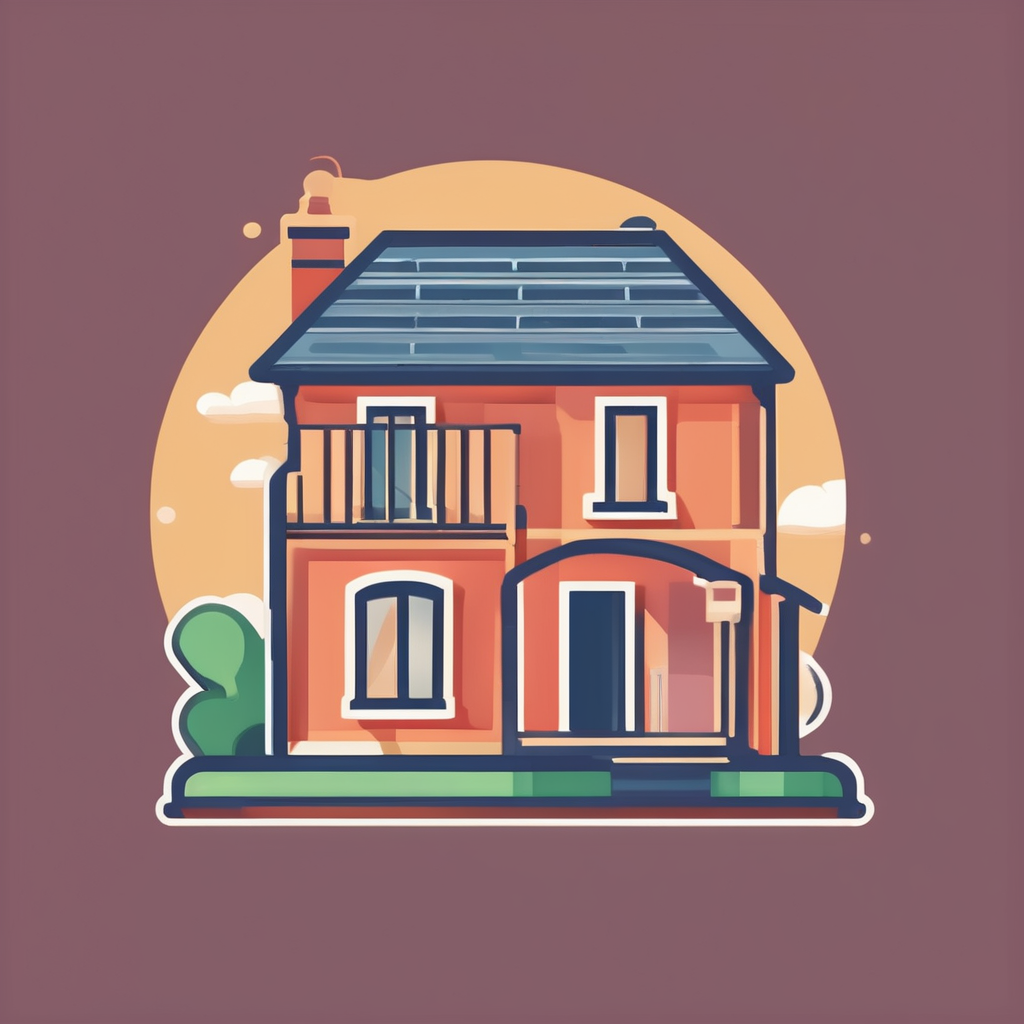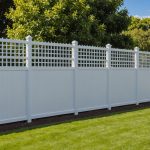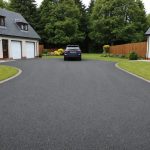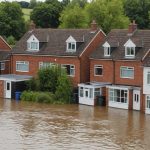Wind energy offers homeowners in the UK a sustainable way to power their lives while reducing carbon footprints. However, the effectiveness of your wind turbine largely hinges on its placement. Strategic positioning can significantly enhance energy output and efficiency. This guide provides practical insights on how to select optimal locations for turbines, helping you harness the maximum potential of this renewable resource. Embrace the wind and empower your home today.
Understanding Wind Energy Potential
Wind energy is a renewable resource that offers numerous benefits for homeowners, including reduced electricity bills and a lower carbon footprint. The basics of wind energy involve harnessing the kinetic energy from wind using turbines to generate electricity. This sustainable energy source is gaining popularity due to its environmental benefits and cost-effectiveness.
Avez-vous vu cela : Unlocking Energy Efficiency: The Advantages of Variable Speed Drives for Home Appliances in the UK
Several factors influence the energy production potential of wind turbines. The wind speed is a crucial element; higher wind speeds generally result in greater energy output. Turbine size and height also play significant roles, as larger and taller turbines can capture more wind. Additionally, the efficiency of the turbine technology itself can affect energy production.
Location is paramount in maximizing wind energy output. Ideal sites for wind turbines are often open areas with consistent and strong winds, such as coastal regions or plains. Proximity to obstructions like buildings or trees should be minimized to reduce wind turbulence that can hinder turbine performance. By carefully selecting the location and considering these factors, homeowners can significantly enhance their wind energy generation capabilities.
A lire également : Top Tips for Safeguarding and Caring for Hardwood Floors in Your Charming UK Cottage
Understanding these elements can empower individuals to make informed decisions about integrating wind energy into their homes, contributing to a more sustainable future.
Site Evaluation Techniques
When considering site assessment for wind turbines, several key criteria must be evaluated to ensure optimal energy production. Factors such as wind speed, direction, and consistency are paramount. High wind speeds and consistent wind patterns enhance turbine efficiency, while turbulent winds can reduce performance.
Tools and Technologies
Modern tools and technologies facilitate comprehensive site assessments. Anemometers measure wind speed and direction, providing crucial data for determining site suitability. Wind maps and software models simulate wind patterns over time, offering insights into potential energy output. These technologies help in making informed decisions about turbine placement.
Importance of Wind Speed and Direction Analysis
Understanding wind speed and direction is essential for effective turbine placement. By analysing these factors, homeowners can identify the most productive locations for installation. Turbines should be placed in areas with minimal obstructions, such as buildings or trees, to reduce turbulence. Additionally, the height of the turbine can be adjusted based on wind data to capture the most efficient wind flows.
By leveraging advanced tools and conducting thorough site assessments, individuals can optimise their wind energy systems. This ensures not only increased energy production but also a more sustainable and cost-effective energy solution for residential use.
Local Regulations and Permits
Navigating the UK Wind Energy Regulations is crucial for homeowners considering wind turbine installations. The regulatory landscape ensures safe and efficient integration of turbines into residential areas. Understanding these regulations helps in aligning projects with legal standards, avoiding potential setbacks.
In the UK, the permitting process for residential wind turbines involves several steps. Homeowners must first seek planning permission from local authorities. This requires submitting detailed plans, including turbine specifications and site assessments. Compliance with environmental and safety standards is essential, as authorities evaluate potential impacts on wildlife and local communities.
Common challenges in the permitting process include addressing concerns about noise, visual impact, and potential effects on local ecosystems. Homeowners can navigate these by engaging with local communities early in the planning stage. Providing clear information and addressing concerns transparently can facilitate smoother approvals.
Key compliance requirements include adhering to height restrictions and ensuring turbines are situated at a safe distance from property boundaries. Regular maintenance and safety checks are also mandated to ensure ongoing compliance. By understanding and adhering to the UK Wind Energy Regulations, homeowners can successfully integrate wind energy solutions, contributing to a sustainable future.
Optimal Placement Strategies
Understanding turbine placement strategies is essential for maximizing energy output from wind turbines in residential settings. One critical aspect is maintaining recommended distances from buildings and trees. Ideally, turbines should be positioned at least 300 meters away from such obstructions to minimize turbulence and optimize wind flow. This distance ensures that the turbine captures the most consistent and strong winds available.
Local topography significantly impacts wind flow optimization. Analyzing the landscape is crucial; hills, valleys, and other geographical features can alter wind patterns. For instance, placing turbines on elevated terrain can enhance exposure to wind, while valleys may obstruct or channel wind in less predictable ways.
Successful case studies of residential turbine placements offer valuable insights. In coastal areas, turbines have been effectively installed on elevated platforms to harness sea breezes, demonstrating the importance of strategic elevation. Similarly, in flat, open plains, turbines are often spaced out to prevent wind shadowing, where one turbine blocks the wind from reaching another.
By considering these factors—distance from obstructions, local topography, and proven placement strategies—homeowners can effectively optimize wind flow and enhance the performance of their wind energy systems.
Understanding Wind Patterns
Grasping the nuances of wind patterns is essential for optimizing wind energy systems. Local wind patterns can vary significantly, influencing the efficiency of wind turbines. To analyze these patterns, it's crucial to collect data over an extended period. This data provides insights into wind speed, direction, and consistency, which are vital for determining the most effective turbine placement.
Seasonal Variations
Seasonal variations play a significant role in wind energy production. For instance, certain regions may experience higher wind speeds during specific seasons due to climatic changes. Understanding these variations helps in predicting energy output and planning for periods of lower production. Homeowners can use this information to adjust their energy consumption or supplement it with other renewable sources.
Tools for Monitoring
Several tools are available for monitoring wind patterns over time. Anemometers and wind vanes are commonly used to track real-time wind speed and direction. Additionally, software models can simulate wind patterns based on historical data, offering a comprehensive view of potential energy production. By leveraging these tools, individuals can make informed decisions about turbine placement and energy management, ensuring a reliable and efficient wind energy system.
Cost-Benefit Analysis for Homeowners
Exploring the cost-benefit analysis of wind energy for homeowners involves weighing the initial investment against long-term savings. The upfront costs of installing wind turbines can be significant, but these are often offset by reduced energy bills over time. Homeowners can achieve a favourable return on investment through careful planning and site selection.
Financial Incentives and Grants
In the UK, various financial incentives and grants are available to ease the burden of initial costs. These can significantly improve the financial viability of wind energy projects. Government schemes may offer rebates or subsidies, reducing the overall expense for homeowners. Taking advantage of these opportunities can enhance the attractiveness of wind energy investments.
Estimating the Payback Period
Estimating the payback period for wind turbine installations is crucial for understanding the financial benefits. The payback period varies based on factors such as turbine efficiency, location, and available incentives. Typically, homeowners can expect to recoup their investment within 5 to 15 years, depending on these variables. By analysing these elements, individuals can make informed decisions about adopting wind energy, ensuring a sustainable and cost-effective energy solution.
Maintenance and Sustainability Considerations
Ensuring the longevity and efficiency of a wind turbine requires regular maintenance. Routine maintenance practices are crucial to uphold the turbine's performance and energy output. These include periodic inspections, lubrication of moving parts, and checking for wear and tear on components. Proper maintenance not only extends the lifespan of the turbine but also maximizes its efficiency, leading to more consistent energy production.
Wind turbine maintenance directly impacts energy production. A well-maintained turbine operates at optimal capacity, reducing downtime and increasing energy yield. Conversely, neglecting maintenance can lead to mechanical failures, resulting in reduced energy output and costly repairs.
Promoting sustainable energy use through wind power involves more than just installation. Homeowners must adopt practices that enhance the sustainability of their energy systems. This includes using eco-friendly materials during construction, ensuring the responsible disposal of turbine components at the end of their life cycle, and integrating other renewable energy sources to balance energy demands.
To foster sustainability, consider:
- Scheduling regular maintenance checks.
- Using biodegradable lubricants.
- Recycling old turbine parts.
By prioritizing wind turbine maintenance and incorporating sustainable practices, homeowners can contribute to a more environmentally friendly and efficient energy future.
Additional Resources for Homeowners
Exploring wind energy resources can significantly aid homeowners in making informed decisions about installing wind turbines. Various online tools and maps are available to assess wind energy potential effectively. Websites like the UK Wind Speed Database provide detailed wind maps, helping homeowners evaluate local wind conditions and identify optimal turbine locations.
Recommended Organizations and Online Forums
Several organizations offer invaluable homeowner support for those interested in wind energy. The Renewable Energy Hub and the British Wind Energy Association provide guidance, from technical advice to financial incentives. Additionally, online forums such as the Wind Power Forum UK allow homeowners to connect, share experiences, and discuss challenges related to residential wind energy projects.
Case Studies and Success Stories
Learning from successful wind energy projects can inspire and guide homeowners. For instance, in Cornwall, a community-driven initiative led to the installation of small-scale turbines, significantly reducing local energy costs. These case studies demonstrate the practical benefits of wind energy, showcasing how effective planning and community involvement can lead to successful implementations. By tapping into these resources, homeowners can confidently embark on their wind energy journey, ensuring a sustainable and efficient energy solution.
Future Trends in Wind Energy
Exploring the future of wind energy reveals exciting possibilities driven by technological advancements and community involvement. Emerging technologies in wind turbine design aim to enhance efficiency and energy output. Innovations such as vertical-axis turbines and bladeless designs are gaining attention for their potential to operate efficiently in diverse environments. These designs promise reduced noise and maintenance, making them more appealing for residential use.
Innovations in Turbines
Recent innovations in turbines focus on increasing adaptability and performance. Smart turbines equipped with sensors and AI can optimize their operation by adjusting to real-time wind conditions. This technology not only boosts efficiency but also extends the lifespan of the turbines, making them a more sustainable option for homeowners.
Predictions for Adoption
As these technologies evolve, predictions indicate a rise in wind energy adoption among UK homeowners. The decreasing cost of turbines and growing awareness of renewable energy benefits are key drivers. Homeowners are increasingly looking to integrate wind energy into their energy mix, supported by government incentives and community initiatives.
Community Initiatives
Community initiatives play a crucial role in enhancing wind energy use. Collaborative projects can reduce costs and increase accessibility, fostering a sense of shared responsibility towards sustainable energy solutions. By embracing these trends, the future of wind energy looks promising and transformative.
Conclusion and Next Steps
For homeowners considering wind energy implementation, understanding the key considerations is vital. First, assess the site suitability by evaluating wind speed, direction, and consistency. This ensures optimal turbine performance and energy output. Next, familiarize yourself with local regulations and secure necessary permits to avoid legal complications.
After deciding to pursue wind energy options, create a detailed plan. This should include selecting the appropriate turbine size and technology based on your energy needs and site characteristics. Engage with local energy experts for tailored advice. They can provide insights into the best practices for installation and maintenance, ensuring long-term efficiency.
Homeowner guidance involves more than just technical aspects. Engaging with local communities can be beneficial. By participating in community initiatives, you can share resources and reduce costs. This collaborative approach fosters a supportive environment for renewable energy projects.
Finally, stay informed about the latest innovations in wind energy. Emerging technologies can offer improved efficiency and sustainability, enhancing your energy system's performance. By following these steps and leveraging available resources, homeowners can successfully integrate wind energy into their homes, contributing to a sustainable future.











